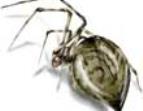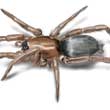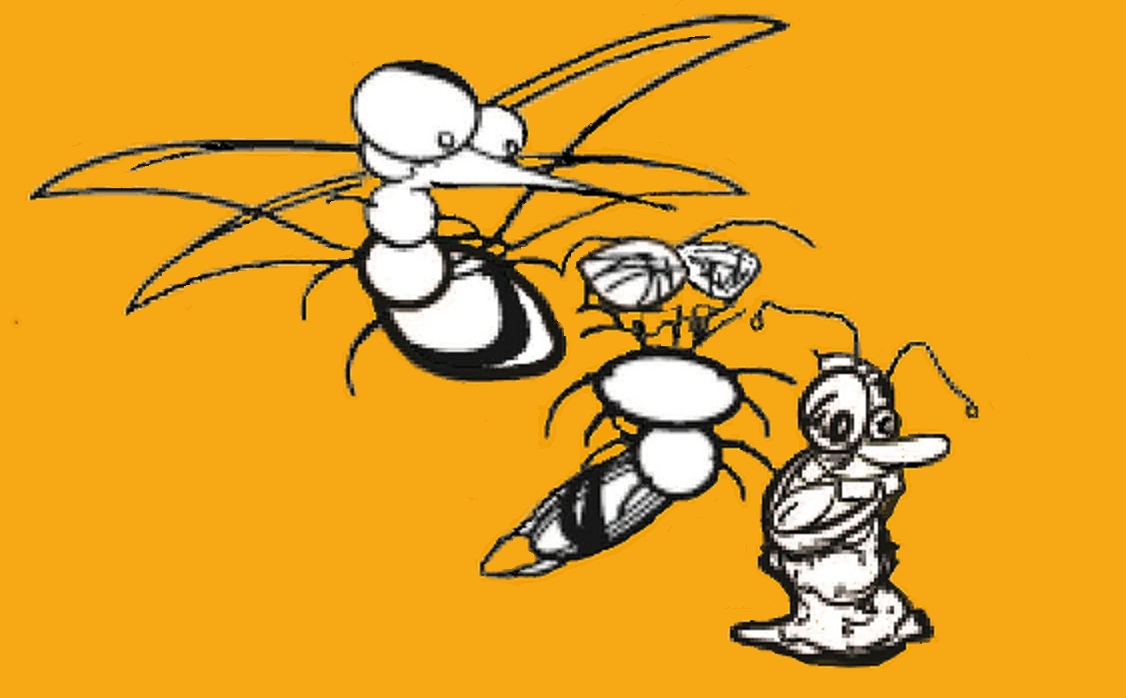
Appearance:
Eight legs, no wings or antennae.
Habit:
Some spiders like moisture and are found in basements, crawl spaces and other damp parts of buildings. Others like dry, warm areas such as subfloor air vents, upper corners of rooms and attics. Hide in dark areas.
Diet:
Feed on insects.
Reproduction:
Produce an egg sac.
Of the many species of identified spider species, house spiders are the most frequently found in human dwelling places. Although their presence is discomforting, house spiders are not necessarily lethal to humans. Small, controlled populations can even prove useful, as they consume other unwanted household pests. Several species are considered house spiders. Some of the more prevalent house spider species include the common house spider, the domestic house spider, the aggressive house spider and the brown house spider.
A house spider's body is divided into the cephalothorax and the abdomen. Like scorpions, mites and ticks, house spiders are wingless. They are classified as arachnids rather than insects and have eight, single-lens eyes.
House spider webs are typically funnel-shaped and can be located in various places within a home, including windows, ceiling corners and above or beneath fixtures. House spider webs are large and constructed of thin silk threads. They serve both as dwelling places and as traps for prey. House spider prey is paralyzed by venom injection before being broken down by digestive juices. As a result, prey is liquefied to allow for consumption.
Common House Spider
Always ready to serve You - 301-731-2024
Ground spider is the name that many people use for a large group of spiders. The scientific name for the family is Gnaphosidae. There are many species in this family. There are a few that are fairly common One is the Parson spider, Herpyllus Ecclesiasticus. This is a blackish spider with white abdominal markings. It is about 1/3” long. Another is the mouse spider, Herpyllus blackwalli. This spider gets its name from the color of the hair on its body – it is “mousey” gray. The mouse spider is about 1/2” long.
Ground spiders are one of the most populous species of spiders in the world. Commonly found dwelling beneath rocks, logs and other objects on the ground, ground spiders rarely leave their homes except to hunt. These spiders are red or gray-brown in color and may be solid or striped. Ground spiders do not cause any medical conditions in humans. Due to their reclusive nature, humans rarely see them.
While these spiders do spin silk, they do not trap prey within their webs. Rather, ground spiders hunt and chase prey along the ground. Hunting typically occurs outside, but ground spiders may also be seen in homes when temperatures drop significantly.
Ground spiders produce silk through the use of their spinnerets, which are shaped like barrels. These glands are often instrumental in identifying ground spiders. Also known as endites, the mouthparts of ground spiders are found in pairs and feature indentations not present on other spider species.
Ground spiders are nocturnal hunters. They do not make webs to capture prey. They forage aggressively for insects. During the day, they hide under stones or logs. When they come inside of homes, they spend the day in dark, quiet places. People who are bitten by spiders often say that it happened when they picked up something that had been stored for a long time. Shoes in closets are good hiding places for spiders.
Preventing ground spiders and other hunting spiders starts with eliminating their food. Since these spiders eat insects that crawl, inspect the outside for insect entryways. Ground-level entrances should be closed. Check exterior doors to be sure they close properly. Replace any missing weather-stripping. Check basement windows and crawlspace vents for proper screens. Squares of plastic screen can prevent insects from using weep holes as entrances to the home.
Move firewood piles away from the house. Move mulch 6 to 12” away from the foundation. This will create a “dry zone” that insects (and spiders) will hesitate to cross.
A barrier application of insecticide on the outside foundation can help prevent insects from coming into the house. Because of moisture and temperature, the barrier will need to be re-applied periodically. The local pest control professional can do this. They will use an assortment of products for varying surfaces and weather conditions

Ground Spiders
---------------------------------------------------------------------------------------------------------------
Home Privacy Policy Family Careers Feedback Pest Control Termite Control Commercial Contact Us Links
